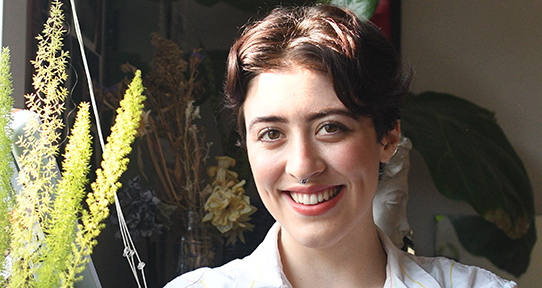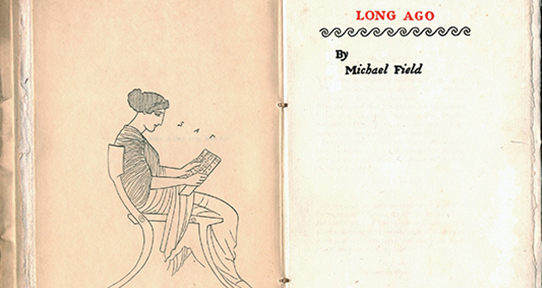Reflecting on the Lowens-Libraries Fellowship Program

by: Sonja Pinto, M.A., Lowens-Libraries Fellow
Before receiving a Peter and Ana Lowens University of Victoria Libraries Special Collections Student Fellowship, my academic research process followed a predictable pattern shaped by word counts, research prompts, degree requirements, and course reading lists. This research generally culminated in a three-to-five-thousand-word research paper to be read by the professor and, if I was lucky, the submission committee of an academic journal. Even when I took classes on subjects with which I was completely unfamiliar, I could still reliably expect to write a research essay with familiar conventions and structural signatures that suggested to me the kind of output that I should produce. And, further, the course’s learning outcomes guided the kinds of research questions that I proposed.
While these criteria and formats are helpful and practical in the classroom, opportunities to pursue original research and in non-traditional output modes can be rare as an undergraduate and even as a graduate student. The Fellowship provided me with an opportunity to undertake a project of my own creation and direction. This program challenged me to ask how I could use the skills I learned in the classroom and apply them to a project with no syllabus, no required readings, and few output parameters. I had only my own curiosity and the end goal of presenting research about an object in UVic’s Special Collections to a public audience. My cohort, the first ever group of Lowens-Libraries Fellowship recipients, also set the precedent for what kinds of projects this fellowship will produce going forward.
Though I had worked with some of the library’s collections and archives in past research projects, I had never worked on a project where I could direct its scope, topic, and output with complete control—even my master’s thesis had recommended word counts and other necessary guidelines to follow! The creative freedom and lack of direct examples on which to base my work in the Lowens-Libraries Fellowship presented me with an unusual and exhilarating chance to form a project from scratch and to challenge myself to apply my years of study in English Literature classrooms to a new context.
The Fellowship workshop series provoked me to question my research and output methods. I pondered questions like what role do archival librarians have in the work I am doing? How was the book I am working with put together and with what materials was it made? How will I structure and organize the metadata I produce? What will my project look like visually, and how will it be accessible to a general audience? What kind of story am I telling about my chosen materials? These questions challenged me to pursue different paths in my research and expand my analytical skills.
Along with these questions, I drew on the knowledge and capabilities I had acquired while perfecting the research essay to examine and write about my chosen object, a copy of Long Ago (1897) by Michael Field. Many of the methods and practices that I would use for a typical research essay—such as close reading, summarizing existing scholarship, and practicing careful research hygiene—helped me prepare my fellowship project. I also spent hours leafing through archival and digital material, scanning pages from my chosen material, and speaking with library staff about the origins and acquisition of my chosen object.

Yet I also performed several tasks that aren’t required in a typical research project. I consulted acquisition catalogues, emailed libraries with rare items related to mine, determined the type of paper used to create my chosen book, and problem-solved HTML glitches as I created my digital exhibit. I uploaded scans to a digital platform called Omeka and created metadata to describe them as digital objects. I combed through letters and diaries in my research and followed leads based on the information I found in UVic Special Collections. I thought about how and why my chosen book had even ended up at UVic in the first place. These tasks and questions tested and ultimately enhanced my research abilities by allowing me to take risks and uncover information that I may not have otherwise pursued.
The objects in UVic Special Collections have rich backstories, literary and historical intrigue, and fascinating provenance. Many of these items are unique, one-of-a-kind objects with near-endless research possibilities. My work on the Lowens Fellowship project, and the outstanding work of my peers, demonstrates that it only takes a curious student to unearth the treasures hiding in the shelves of UVic’s library collections. You can find this year’s projects online.
Sonja Pinto was part of the first cohort of student fellows in the Peter and Ana Lowens University of Victoria Libraries Special Collections Student Fellowship Program at UVic Libraries. Pinto recently completed their MA in English at the University of Victoria where they also completed their BA (English Honours) in 2020. During their time at UVic, they have worked as a Research Assistant for Digital Victorian Periodical Poetry and as a Teaching Assistant in the Department of English.
